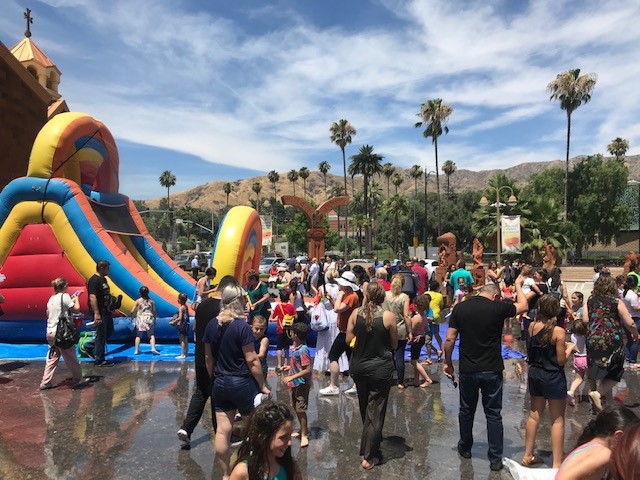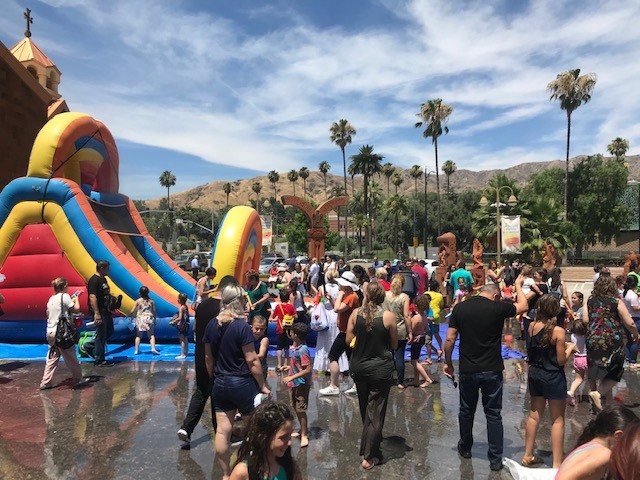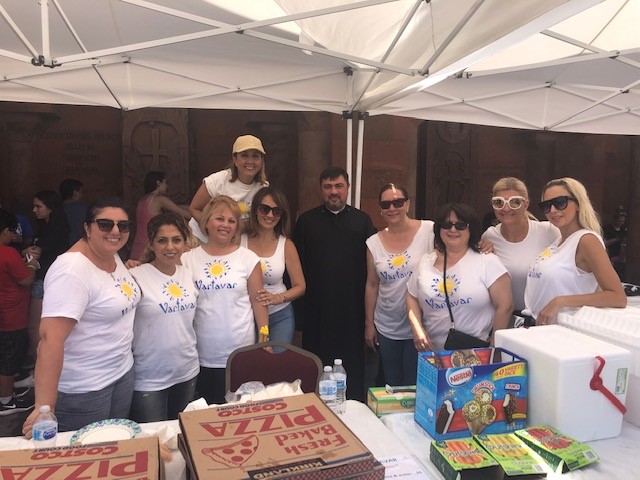
St. Leon Church "Sound of Children" Summer Camp Click Here to lean more

The Feast of the Transfiguration of our Lord and Savior Jesus Christ, one of the five tabernacle feasts (Daghavar Don) in the Armenian Apostolic Church was observed on Sunday, July 28. At the invitation of the Diocesan Primate Archbishop Hovnan Derderian, the Very Rev. Fr. Zacharia Baghumyan, Director of the Bishops’ Synod’s Office of the Mother See of Holy Etchmiadzin was the celebrant priest at St. Leon (Srbots Ghevontiants) Armenian Cathedral.
Fr. Zacharia was assisted at the Holy Altar by the Rev. Fr. Khajag Shahbazyan and the altar servers.





Following the service, parents and children gathered at the Turpanjian where they participated in Vartavar, the traditional Armenian festival organized by the Cathedal’s Ladies Society. People of all ages participated in the exciting festival, drenching each other with buckets of water and water balloons.
About the Feast of the Transfiguration
The other four tabernacle feasts include the Feast of the Nativity and Theophany, Holy Easter, Feast of the Assumption of the Holy Mother of God and the Exaltation of the Holy Cross. All tabernacle feasts are followed by Remembrance of the Dead (Merelotz).
Referred to as Baydzaragerbootiun, the Feast of the Transfiguration is one of the five principal feasts of the Armenian Church, so named because of Christ’s luminous appearance. In Armenia, it is also known as Vartavar (the Festival of Roses) after the old pagan feast, which it replaced.
The feast marks Christ’s appearance with a resplendent countenance to three of His disciples, Peter, John, and James, on the holy mountain of Galilee, also known as Mount Tabor.
The Bible tells us that when Jesus was considering going to Jerusalem, he spoke with his disciples of the torture that was in store for Him and of the end of His life on earth. Jesus wanted His disciples to be prepared for the coming events.
His disciples, however, did not believe that Jesus could possibly face such tribulations and Peter adamantly said none of Jesus’ predictions would come true, and Jesus admonished his disciples. About a week later, Jesus had his miraculous Transfiguration.
He went up Tabor Mountain with three of His disciples—Simon Peter, James, and John Zebedee—to pray as the other tired disciples remained at the bottom of the mountain. It was there that Jesus began to assume a new appearance. The three disciples were amazed when they saw His new radiant being.
Though it was nighttime, the disciples saw light coming from the sun in the sky. Among the light, they saw two other men—said to be Moses and Elijah—speaking to Jesus about His remaining time left on earth and the sacrifice He would soon make.
Then a cloud came upon the group. The voice of God was heard, saying the same phrase He said when Jesus was baptized, “This is my Son, my Chosen; listen to Him!” (Luke 9:35).
After the Transfiguration, Jesus asked His disciples not to talk about it until His coming Resurrection.
This scene can be found in four different places in the New Testament: Matthew 17:1-8; Mark 9:11-7; Luke 9:29-36; and Peter II 1:17-18.
In the Armenian calendar, the feast takes place on the 14th Sunday after Easter—98 days later—so it is movable within an interval of 35 days, from June 28 to August 1. The Orthodox and Catholic churches observe the feast of Transfiguration on a fixed day, August 6.
The official observance takes three days. Sunday is the principal feast, Monday likewise is an ordained feast day and includes the commemoration of the dead, and Tuesday is a non-festal or weekday dominical.